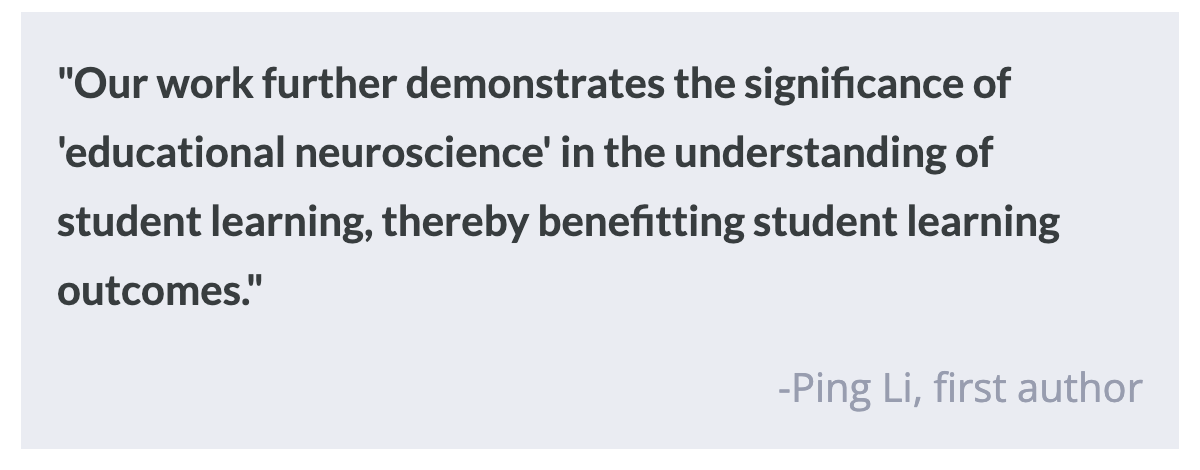The Presence of an Onscreen Instructor Improves Learning
Post by Natalia Ladyka-Wojcik
The takeaway
Students show better learning outcomes and greater synchrony of brain activity, despite lower visual attention to material, when an onscreen instructor is present during video lectures of multimedia information.
What's the science?
The COVID-19 pandemic prompted a significant shift towards online learning using multimedia instructional videos — a shift that persists in educational settings today. The multimedia learning framework suggests that combining pictures and words in instructional videos can create a more interactive learning context which in turn boosts motivation and attention among students. Within this framework, previous research supports the principle of embodiment: that human facial expressions and voice are critical for students’ socio-emotional responses and sustained attention during learning. However, it remains unclear whether the onscreen image of the instructor itself called the “image principle”, actually engages students’ cognitive processing of the information to be learned. This week in PNAS, Ping Li and colleagues investigated whether seeing the instructor on-screen during online learning promotes learning and attention, or instead serves as a distractor.
How did they do it?
The authors recruited over 70 college-aged participants to watch video lectures of novel information in biology, psychology, and meteorology while undergoing functional magnetic resonance imaging (fMRI). Their eye movements were tracked as they looked around the screen. Critically, participants were excluded if they had prior expertise in one of the topics presented, thus ensuring that the material to be learned was introduced during the study. Participants were shown video lectures with either an on-screen human instructor, an animated instructor, or no on-screen instructor. Finally, the participants completed a post-learning assessment to determine how much information they had learned from the lecture videos, in addition to a series of tests of their cognitive and socio-emotional abilities.
Using the fMRI and eye movement data collected, the authors studied neural synchrony; a correlational measure of brain activity over time amongst a group of people sharing a particular context (in this case, the presence of an instructor during video lecture watching). The authors also used eye movement fixations to the on-screen video lectures as a measure of attention during learning.
What did they find?
In support of the image principle of multimedia learning, the authors found that students learned better with an on-screen instructor than without. However, a caveat is that learning was not affected by whether the on-screen instructor was human or animated, which suggests that the embodiment type of the instructor does not affect learning performance. Curiously, the authors found that students were more attentive to the instructional slides – as measured by eye movements – without a human instructor onscreen but this did not improve learning performance, reflecting a trade-off between visual distractors and socio-emotional processing.
The authors also found higher neural synchrony between participants during learning when an instructor was present, compared to when no instructor was on-screen. This neural synchrony was most evident in regions of the brain involved in cognitive processing, as well as in socio-emotional processing. Importantly, greater eye movement and neural synchrony predicted better learning of the information, especially among participants with higher cognitive and socio-emotional abilities. Together, these findings strongly support the inclusion of an on-screen instructor during multimedia learning.
What's the impact?
This study found that the presence of on-screen instructors during online video learning benefits students’ comprehension of material, providing higher socio-emotional cues and outweighing the impacts of visual distraction. Although these benefits were found to vary across individuals, the study broadly highlights the importance of creating engaging and interactive learning opportunities, even in online educational settings.


